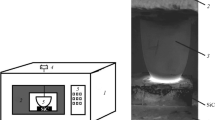Abstract
Microwave pretreatment is one of the emerging technologies that have been reported as having potential economic benefits for the processing of amenable ores. The application of microwave pretreatment to the processing of refractory and finely disseminated ores is of great interest because the technology can potentially reduce high comminution costs and improve mineral liberation. To determine the influence of heating rate on mineral transformation, ground product size distribution and mineral liberation, sized ore samples were subjected to microwave irradiation at power levels varying from 1 to 5 kW over exposure times of between one and six minutes. The microwave-irradiated samples were ground and subsequently floated. A comparison was made with non-microwave-treated samples. Zinc flotation grade and all metal recoveries show a strong dependence on the microwave absorption characteristics of the mineral components of the ore in the following decreasing order: sphalerite, galena and, lastly, chalcopyrite.
Similar content being viewed by others
References
Fitzgibbon, K.E., and Veasey, T.J., 1990, “Thermally assisted liberation — A review,” Minerals Engineering, 3(1/2), pp. 181–185
Hague, K.E., 1999, “Microwave energy for mineral treatment processes — A brief review,” International Journal of Mineral Processing, Vol. 57, pp. 1–24.
Kingman, S.W., Corfield, G.M., and Rowson, N.A., 1999, “Effects of microwave radiation upon the mineralogy and magnetic processing of a massive Norwegian ilmenite ore,” Magnetic and Electrical Separation, 9, pp. 131–148.
Kingman, S.W., Vorster, W. and Rowson, N.A., 2000, “The influence of mineralogy on microwave assisted grinding,” Minerals Engineering, 13(3), pp. 313–327.
Kingman, S.W., and Rowson, N.A., 1998, “Microwave treatment of minerals — A review,” Minerals Engineering, 11(11), pp. 1081–1087.
McGill, S.L., Walkiewicz, J.W., and Smyres, G.A., 1988, “The effects of power level on the microwave heating of selected chemicals and minerals,” Material Research Society Symposium proceedings, 124, pp. 247–252.
Raddatz, A.E., Walkiewicz, J.W., and McGill, S.L., 1989, “Microwave induced fracturing to improve grindability,” Proceedings of the SAG Conference, Vancouver, Canada, pp. 503–512.
Veasey, T.J., and Wills, B.A., 1991, “Review of methods of improving mineral liberation,” Minerals Engineering, 4(7/11), pp. 747–752.
Wills, B.A., Parker, R.H., and Binns, D.G., 1987, “Thermally assisted liberation of cassiterite,” Minerals and Metallurgical Processing, 86, May, pp. 94–96.
Wills, B.A., 1988, “Grinding mills,” Mineral Processing Technology, 4th Edition, Pergamon Press, Oxford, pp. 253–308.
Author information
Authors and Affiliations
Rights and permissions
About this article
Cite this article
Orumwense, A.O., Negeri, T. Impact of microwave irradiation on the processing of a sulfide ore. Mining, Metallurgy & Exploration 21, 44–51 (2004). https://doi.org/10.1007/BF03403302
Revised:
Accepted:
Published:
Issue Date:
DOI: https://doi.org/10.1007/BF03403302




